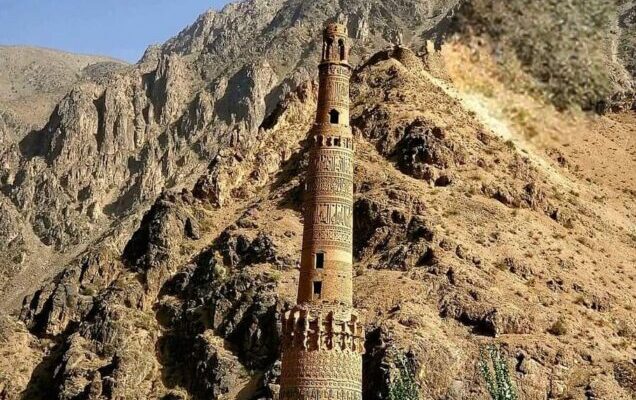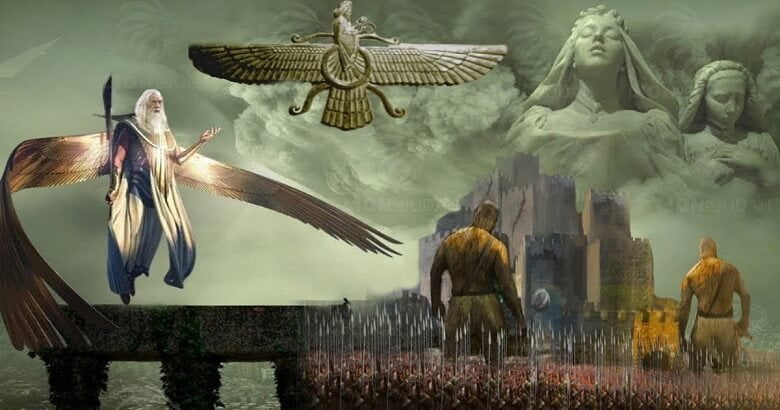An interior section of Sao Gabriel, the navy’s flagship, on the first voyage to India in 1497 by Portuguese explorer Vasco da Gama, known as the first navigator to discover the Indian sea route.
Vasco da Gama was a Portuguese sailor and explorer who lived between the 15th and 16th centuries. Not only is da Gama a significant figure in the history of Portugal and Europe, but he is also an important personage in world history. Vasco da Gama was the first European to reach India via an oceanic route.

As a result of Vasco da Gama’s voyages, Portugal cemented its reputation as a formidable seafaring nation and grew rich from the goods that were coming from the East. Moreover, da Gama’s discovery of a maritime route connecting Europe to Asia may be regarded to be the beginning of the age of global imperialism.
Not long after da Gama’s first voyage to the East, the Portuguese established their first colony in Asia, when they conquered Goa, in India, in 1510. Portugal’s last colony, Macau, is also in Asia and was only handed back to China in 1999.

The Early Life of Vasco da Gama
Vasco da Gama was born around 1460 in Sines, a coastal town in the Alentejo region, in the southwestern part of Portugal. da Gama’s father was a minor provincial nobleman by the name of Estêvão da Gama, who served as a commander of the town’s castle. Unfortunately, little else is known about da Gama’s early life.
In fact, the next piece of information about Vasco da Gama’s life prior to his voyage to the East comes from 1492. In that year, the King of Portugal, John II, sent da Gama to Setubal, a port city between Lisbon and Sines, to seize French vessels.
This was carried out in retaliation for attacks by the French on Portuguese shipping interests, despite the fact that the two countries were not at war. da Gama proved his capabilities by performing his mission swiftly and effectively.
Politics and the Portuguese Fleet
In 1497, Vasco da Gama was given the task of seeking an oceanic route from Western Europe to the East and was placed at the head of a Portuguese fleet. Although da Gama is one of Portugal’s greatest maritime explorers, he was certainly not its first. In fact, the kingdom began to explore the uncharted waters to its west and south about 80 years before da Gama’s first voyage.
In 1415, the Portuguese crossed the Strait of Gibraltar and captured Ceuta from the Moors. This is considered to be the starting point of the Portuguese Colonial Empire. In the decades that followed, the Portuguese discovered (and colonized) the island of Madeira, and the Azores, and continued their exploration down the western coast of Africa.
Interestingly, one of the reasons that spurred the Portuguese to seek a sea route to the East was the legend of Prester John, who was rumored to be the monarch of a long-lost Christian kingdom in the East. The rulers of Portugal, as Catholics, saw it as their sacred duty to spread Christianity, and to destroy Islam. Therefore, the Portuguese kings were hoping to find this legendary Christian king in the East, form an alliance with him, and encircle the Muslims.
The envisioned ‘grand alliance’ against the Muslims never materialized, since the Portuguese were not able to locate the legendary Prester John. Nevertheless, the Portuguese grew wealthy as a consequence of the commerce that they conducted during their voyages. The most lucrative of all was the African slave trade and the first consignment of slaves was brought to Lisbon in 1441.
Six years after that, Portuguese seafarers had reached as far south as present-day Sierra Leone. The Portuguese arrived in the Congo in 1482 and 4 years later they were at Cape Cross, in present day Namibia. The Portuguese finally reached the ‘southern end’ of the African continent in 1488, when Bartolomeu Dias rounded the Cape of Good Hope.

It may be pointed out that the Cape of Good Hope was thought (incorrectly) to be the dividing point between the Atlantic and Indian Oceans. Today, however, we know that the southern tip of Africa is in fact Cape Agulhas, located to the southeast of the Cape of Good Hope. While some accounts claim that the name of the landmark was given by Dias himself, others claim that Dias had originally named it ‘Cape of Storms’.
The Age of Discovery: A New World Dawns
Ferdinand Magellan: Defying all Odds in a Voyage around the World
The Lost Treasure of Flor de la Mar, Flower of the Sea
Epic Voyage of Vasco da Gama Connected Europe to the East
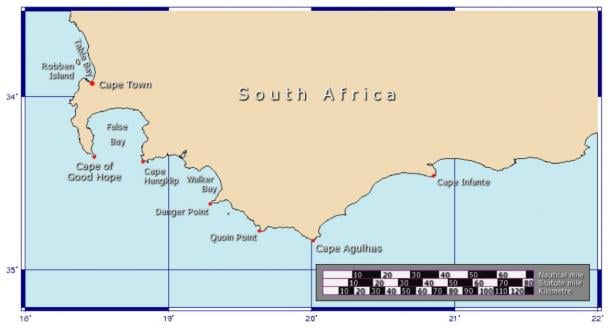
This was a reference to the stormy weather and rough seas that the area is famous for, which was a challenge for the early seafarers who intended to sail round the cape. The story goes on to say that it was John II who changed the name of the cape from ‘Cape of Storms’ to ‘Cape of Good Hope’, as it was supposed to be a good omen indicating that the Europeans could reach India (and presumably the elusive Prester John as well) via the sea.
It seems that there was a hiatus in Portugal’s exploratory voyages after Dias’ rounding of the Cape of Good Hope, as it took the Portuguese another decade before they finally arrived in India. By that time, John was dead, and had been succeeded by Manuel I, the king who gave Vasco da Gama the mission to seek the maritime route to India.
Manuel has a rather unusual, though appropriate epithet, ‘the Fortunate’. He was the ninth child of Dom Fernando, the younger brother of Afonso V, John’s father and predecessor. Considering his position, it was pretty unlikely that Manuel would ever attain the Portuguese throne. In addition, during John’s reign, Manuel’s only surviving brother was murdered by the king on suspicion of conspiracy.
Manuel, however, was spared, and even made Duke of Beja. In 1491, John’s legitimate son, Afonso, died in a horse-riding accident. For the remaining years of his life, John tried to legitimize his bastard son, Jorge de Lencastre, but without success.
The queen, Eleanor of Viseu, herself opposed John on this matter and supported Manuel as the new heir to the throne. The queen, incidentally, was one of Manuel’s sisters. Thus, in 1494, when John’s health was in decline, he named Manuel as his successor, and when the king died in October the following year, Manuel became Portugal’s new king.
Vasco da Gama’s Mission
It was Manuel who placed Vasco da Gama in charge of the fleet that was to sail to India in 1497. da Gama is said to have lacked the relevant experience to lead such an expedition, though some have suggested that he may have studied navigation prior to this. It is more likely that da Gama was chosen for political reasons – Manuel was in favor of the da Gama family and their supporters.
In any case, Vasco da Gama left Lisbon on the 8th of July 1497. The fleet consisted of four vessels – two medium-sized three-masted sailing ships known as carracks, each weighing about 120 tonnes, a smaller caravel, weighing about 50 tonnes, and a supply ship.

The carracks were named São Gabriel and São Rafael, the former commanded by da Gama himself, while the latter by his brother, Paulo da Gama. The caravel was named São Miguel (nicknamed Berrio) and commanded by Nicolau Coelho, whereas the name of the supply ship is today unknown and was commanded by Gonçalo Nunes.
The fleet passed the Canary Islands (which was under Spanish control) on the 15th of July and on the 26th arrived at São Tiago in the Cape Verde Islands. The fleet remained on the island until the 3rd of August before continuing their journey. da Gama initially sailed southwards along the west coast of Africa, but then veered far off into the southern Atlantic, in order to avoid the currents in the Gulf of Guinea.
On the 7th of November, the fleet arrived in Santa Helena Bay (in modern South Africa), where unfavorable winds and adverse currents caused da Gama and his men to halt their journey for several weeks. Finally, on the 22nd of November, da Gama rounded the Cape of Good Hope, and continued the journey eastwards.
Three days after rounding the Cape of Good Hope, da Gama set foot on Mossel Bay, and erected a padrão (a stone pillar left by the Portuguese explorers to mark significant landfalls and to establish possession of the area) there. It was also here that the supply ship was scuttled. Around Christmas, da Gama sailed passed a coast that was yet to be explored by Europeans and called it Natal (the Portuguese word for Christmas).
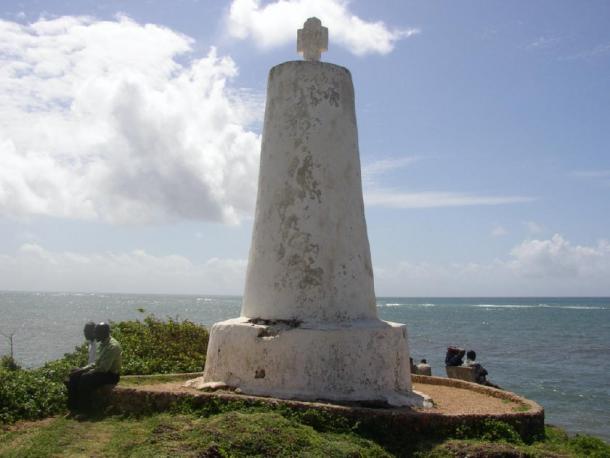
Vasco da Gama’s Journey Continues
In the months that followed, the fleet sailed northwards along the east coast of Africa. In January 1498, the fleet had arrived in the area that is today Mozambique. On the 25th of that month, da Gama and his men reached the Quelimane River, which they called Rio dos Bons Sinais (meaning ‘River of Good Omens’) and set up another padrão. The fleet rested there for a month, as many of the men were suffering from scurvy and the ships needed to be repaired.
On the 2nd of March, da Gama arrived on the island of Mozambique, which was ruled by a Muslim sultan. The islanders believed that the Portuguese were Muslims like themselves and therefore treated them kindly. da Gama gained much information from them and was even given two navigators by the sultan, one of whom deserted when he learned that the Portuguese were in fact Christians.
In April, the fleet reached the coast of modern day Kenya. On the 14th of April, da Gama was in Malindi, where he obtained the service of a Gujarati navigator who knew the way to Calicut, on the southwestern coast of India. On the 20th of May, the fleet arrived in Calicut after sailing for 23 days directly across the Indian Ocean.
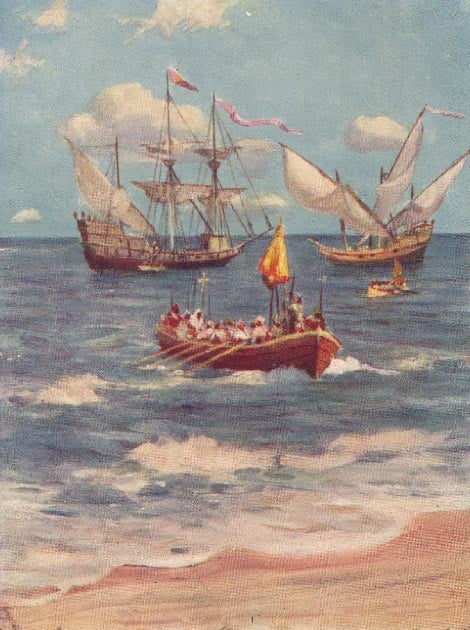
At Calicut, da Gama’ gifts failed to impress the Zamorin (the Hindu ruler of Calicut). In addition, the Muslims merchants who were already there were hostile towards the Portuguese. As a consequence, the Portuguese failed to conclude a trade treaty with the Indians of Calicut.
. Record Breaking Finds From Portuguese Shipwreck Confirmed by Guinness Book of Records [World’s Oldest Finds]
. Pedro Alvares Cabral: The Lucky Lost Navigator Who Made Brazil Portuguese
. Amerigo Vespucci: The Forgotten Explorer Who Named America
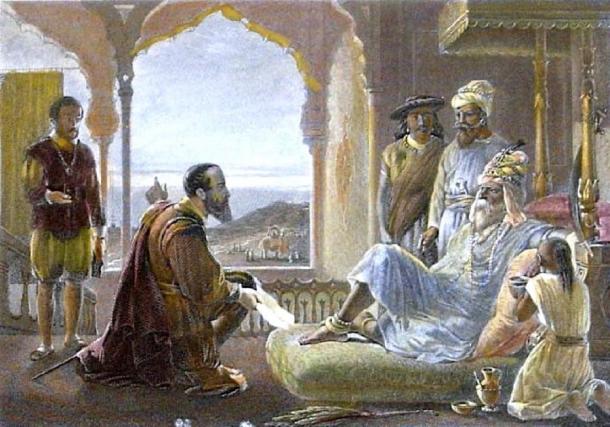
In the meantime, relations between the Portuguese and the Indians grew increasingly tense and Vasco da Gama finally decided to sail back to Portugal at the end of August. The Portuguese, who were still ignorant about the monsoon wind patterns, chose the worst possible time for their return journey. As a result of sailing against the monsoon winds, da Gama took nearly three months to cross the Indian Ocean, during which time many of his crew died of scurvy.
The lack of crew members also forced da Gama to order the destruction of São Rafael when the fleet arrived at Malindi on the 7th of January 1499. The two remaining ships rounded the Cape of Good Hope on the 20th of March but were separated a month later by a storm.
São Miguel arrived in Portugal on the 10th of July, while São Gabriel arrived on the 9th of September. Nine days later, da Gama entered Lisbon, and was welcomed as a hero.
The king bestowed the title Dom on Vasco da Gama, gave him an annual pension of 1000 cruzados, and estates. Nevertheless, da Gama had paid a hefty price for his success – of the original crew of 170 men only 55 returned, and his own brother was among the dead.
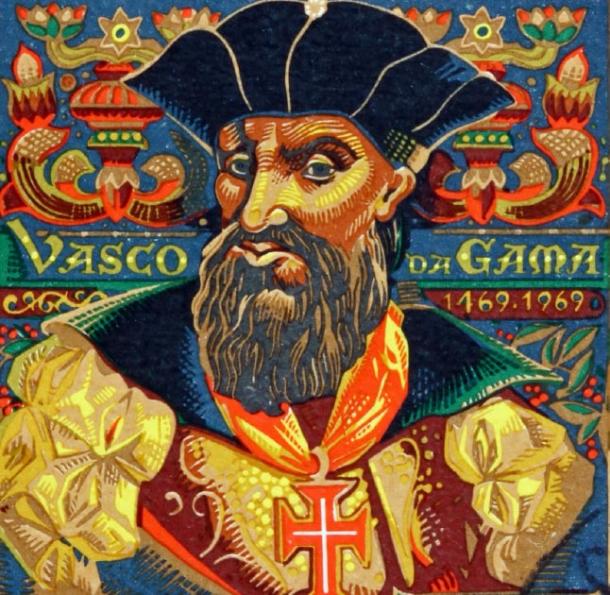
The Success of Vasco da Gama’s Voyage Demands a Repeat
The success of Vasco da Gama’s voyage encouraged the king to send another fleet, this time consisting of 13 ships, to secure a trade treaty with Calicut. Although relations between the Zamorin and the Portuguese began much better this time round, it quickly went south. The Portuguese came into conflict with the Muslim merchants, who wanted to keep their monopoly on the city’s trade.
As a result, a riot broke out, which overran the Portuguese trading post and many Portuguese were slaughtered. The Zamorin was blamed for the incident and his city was bombarded, thus war was declared by the Portuguese on Calicut.
In 1502, another fleet was set out from Lisbon, under the command of da Gama, who was charged with exacting revenge on Calicut, and to force the Zamorin into submission. Raids were also carried out against Arab merchant ships, and, according to one story, da Gama had captured a pilgrim ship with 200-400 passengers, locked them up in the vessel after plundering its goods, and set fire to the ship.
The story, which may have been false, or at least exaggerated, caused Vasco da Gama to be reviled in that part of the world. Incidentally, one of da Gama’s ships from his second voyage has been found off the coast of Oman and excavated between 2013 and 2015.
Vasco da Gama failed to force the Zamorin to submit and seems to have lost the favor of Manuel when he returned. For the next two decades of his life, da Gama retired to the town of Évora and lived a quiet life with his wife and six sons. He was only sent on his third and last voyage in 1524 by John III, Manuel’s successor.
This time, Vasco da Gama was sent to serve as the Portuguese viceroy in India. In September 1524, da Gama arrived in Goa and began combating the corruption that was plaguing the Portuguese administration in India.
Three months later, however, da Gama died in Cochin as a result of illness, either due to overwork or some other reason. His remains were first buried in St. Francis Church in Cochin, and then brought back to Portugal in 1539 and laid to rest Vidigueira before being transferred to the Jerónimos Monastery in Belém, Lisbon during the late 19th century, where they have remained till today.

Top image: Portuguese caravel of the 15th century. Vasco da Gama was a Portuguese sailor and explorer. Credit: Michael Rosskothen / Adobe Stock
By Wu Mingren
Updated on January 21, 2021.
